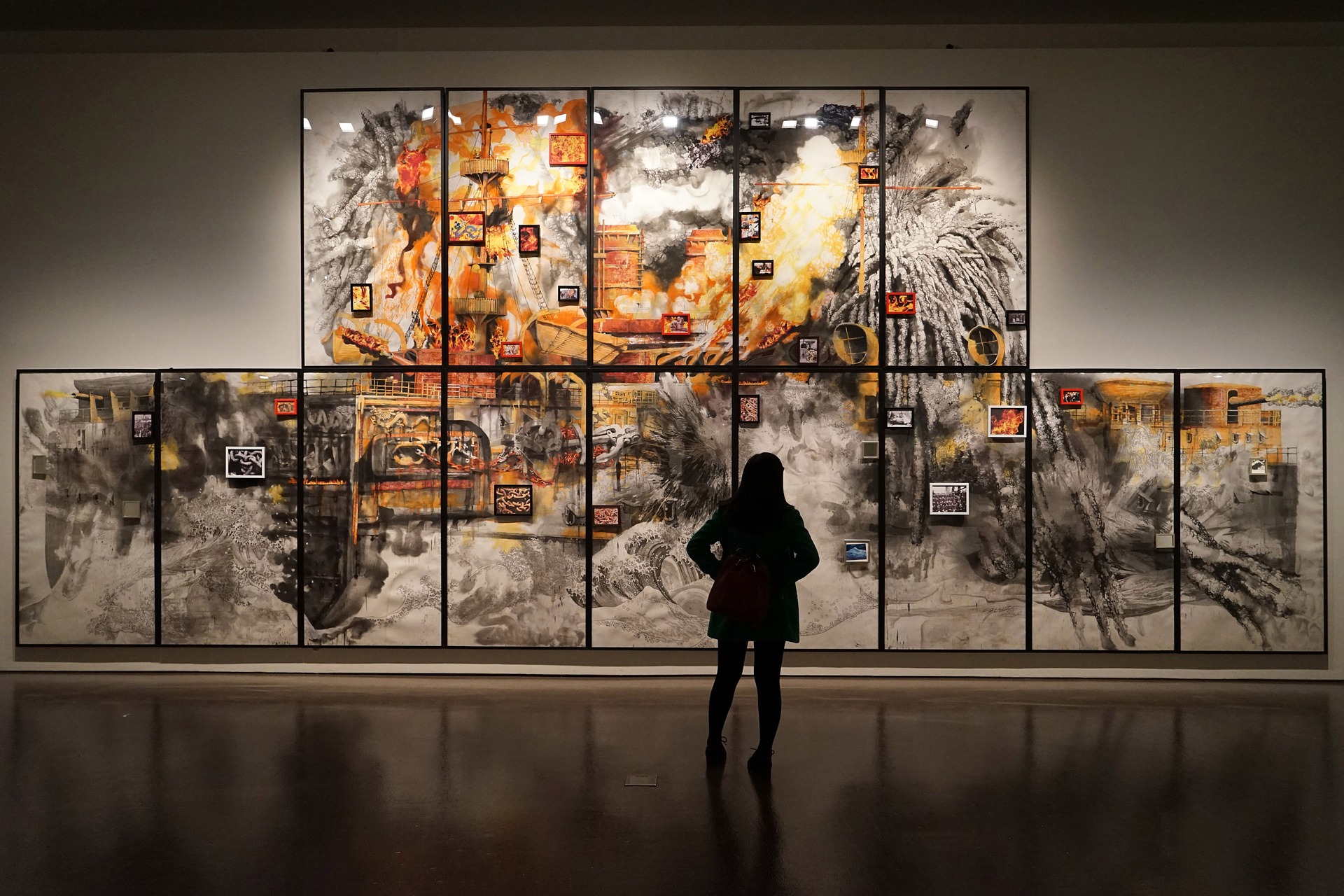Non-Fiction Texts
Chapter 7: The End of the Beginning
MINDS ON
 Vocabulary 107
Vocabulary 107

As any effective reader, writer, speaker, and creator knows, words are the foundation upon which ideas are built. Words work to expand thoughts, clarify concepts and even permit epiphanies! (definition:A moment when you suddenly feel that you understand, or suddenly become conscious of, something that is very important to you.) Do you recall that, throughout this unit, you've been reading many familiar and unfamiliar words? In addition to each activity's content and its introductory Vocabulary box, there have also been numerous defined words throughout. Let's find out how voluminous (definition:Of great volume, size, or extent.)your vocabulary has become!
 Vocab in Review
Vocab in Review
To prepare for any long journey, you need to ensure you have adequate supplies. As an English student, words will support and sustain you throughout this course. To ensure you're ready for the next stage in your journey, you'll complete this Unit 1 vocabulary exercise.
Answer the following questions. If you do not know what the word means, leave it blank.
- In your own words, define each of the following terms and use it in a separate sentence:
- bildungsroman
- text
- protagonists
- metacognition
- plagiarism
- anecdotes
- sidequests
- subquests
- ellipses
- pejorative
- connotation
- debunk
- Weltanschauung
- etymology
- context
- juxtaposed
- mundane
- poignant
- myopic
- iconic
- voyeurism
- infamous
- naive
- satirical
- chronological
- brand
- perspicuous
- epiphanies
- voluminous
- For each word, indicate whether you knew it before the course or learned it during the course. For the words you don't know, identify ways in which you might determine the meaning of the word (e.g., using context clues, identifying the meaning of prefixes or suffixes, or using an online dictionary). Then select three words you did not know and define them.
Before you continue, this is a good time to review the various reading skills that are used to assist you in understanding texts.
ReadingStrategies
ACTION

Now that you've reached the end of Unit 1: Non-fiction texts, you'll begin curating (definition:To select, organize, and present information, typically using professional or expert knowledge.)a collection of texts for use in your culminating task. Specifically, you will need to find two non-fiction texts (remember, a text is a means of communication that uses words, graphics, sounds, and/or images, in print, oral, visual, or electronic form, to present information and ideas to an audience).
 Non-Fiction Curating
Non-Fiction Curating
Seek out two non-fiction texts that relate to the course's bildungsroman (definition:A type of novel concerned with the education, development, and maturing of a young protagonist.)focus, as well as the course's main inquiry question: how do the texts with which we engage affect and influence us and our place in the world?
After finding these two texts, answer the following questions:
- What type of non-fiction texts did you select?
- Why did you select these two texts?
- Where did you find these texts?
- How do these texts relate to the course's bildungsroman focus?
- How do these texts relate to the course's main inquiry question: how do the texts with which we engage affect and influence us and our place in the world? In other words, you will find two non-fiction texts that not only relate to the idea of growing up and maturing, but that have also influenced you, your beliefs, or your understanding of your place in the world.
“
Mentor texts are pieces of literature that you—both teacher and student—can return to and reread for many different purposes. They are texts to be studied and imitated...Mentor texts help students to take risks and be different writers tomorrow than they are today. It helps them to try out new strategies and formats. They should be basically books that students can relate to and can even read independently or with some support. And of course, a mentor text doesn't have to be in the form of a book—a mentor text might be a poem, a newspaper article, song lyrics, comic strips, manuals, essays, almost anything.
~ Lynne Dorfman
In preparing to complete the assignments for this activity, you will read two mentor texts and view one mentor text. The reading texts are a news report and a memoir, and the viewing text is an autobiography.
If you want to view any links in this pdf, right click and select "Open Link in New Tab" to avoid leaving this page. (View the original article.)
If you want to view any links in this pdf, right click and select "Open Link in New Tab" to avoid leaving this page. (View the original article.)
Watch this mini-biography about Gandhi.
CONSOLIDATION
 Reading
Reading
Now that you've read the two mentor texts, complete the following reading tasks.
- Which mentor text did you find more enjoyable? Why?
- Identify one before, during, and after reading comprehension strategy you used to help you understand the news report and the memoir. For each strategy, briefly explain how it specifically helped you understand the mentor texts.
- Summarize each text in one sentence. Briefly explain why you believe this is the most important idea in the mentor text.
- Who do you believe is the intended audience for each mentor text? Justify your answer.
- Based on your own experience, do you find each mentor text convincing? Explain why or why not.
- How does the use of evidence in each mentor text clarify its theme? (definition:Theme is defined as a main idea or an underlying meaning of a literary work, which may be stated directly or indirectly.)
- For each mentor text, select one piece of evidence, identify the evidence type, and explain why it is effective.
- What effect would a change in gender or ethnocultural background have on the way the events are described in each mentor text?
- How does the organization of each mentor text contribute to its meaning?
- Identify one text feature from each mentor text and explain how it helps to communicate meaning.
- Identify one element of style from each mentor text and explain how it helps to enhance the effectiveness of the mentor text.
- How could hearing or seeing the text help you to better understand it?
 Writing
Writing
Take a moment to re-read the polished news report and memoir that youearlier and then complete the following questions
- After reading the two mentor texts, identify one content change (addition, modification, or deletion) you would make to your original texts. Explain why you would make this change and how it improves your original text.
- After reading the two mentor texts, identify one organizational change (addition, modification or deletion) you would make to your original texts. Explain why you would make this change and how it improves your original text.
- If you were to include an additional piece of evidence in each original text, what would it be? How would it improve your text?
- Who was your audience for each of your texts? How did you develop your texts to appeal to that audience?
- Select a different audience and explain how you would have to change your original texts to appeal to that audience.
- Which of the two texts demonstrates your greatest growth as a writer? Explain your thinking.
 Oral Communication and Media Studies
Oral Communication and Media Studies
After viewing the Gandhi biography mentor text, use specific evidence from it to explain how each of the following skills and strategies are used to communicate the message effectively:
- voice;
- tone;
- body language;
- organization/structure;
- transitions; and
- bias.
Now create your own photo essay autobiography. The autobiographical photo essay should meet the following requirements by:
- including between ten to twenty photos (they can be taken, found or a combination);
- utilizing purposeful, planned organization;
- having an engaging title;
- including the bildungsroman concept; and
- showcasing the personal narrative focus.
In terms of designing your photo essay, there are many available options. Some that you might want to consider are:
- Slideshows: Google Slides, Microsoft PowerPoint, Apple Keynote;
- Animations: iMovie, Adobe Spark, Powtoons, Scratch; or
- Presentation tools: Prezi, Microsoft Sway, Emaze.
After completing your photo essay autobiography, you will record yourself (voice or video) pretending to present an autobiographical narrative to an audience of your choice. This should not be a summary of the images as your photo essay should stand on its own to communicate a message. Instead, you will add relevant exposition (definition:The insertion of important background information within a story.)and explanations to your images. When choosing your audience, be sure to consider the following:
- Do they know you? If so, how well? How would this change the way you deliver your message?
- Is your intention to entertain, persuade, or inform them about you? Why?
- How do you plan to use voice, tone, organization, body language (if filmed) and transitions to effectively communicate your message?
 Metacognitive Moment
Metacognitive Moment
Well done! You've showcased how much your skills have grown in such a short period of time. Before continuing on in your ENG2D journey, it's time to take a moment to pause and reflect on what you've learned, and where you need to go. To do this, you'll reflect on your growth as an English student by answering the following questions:
- How do the non-fiction texts with which we engage affect and influence us and our place in the world?
- What are your strengths as a communicator? Find an example for reading, writing, oral and media studies from Unit 1 that showcases and celebrates this.
- Which optional sidequests did you complete? What did you learn from them? Which ones did you not complete? Why was this the case?
- Which mandatory subquest best prepared you for the OSSLT? Why?
- As you move forward into the next unit of this course, what will be your specific focus for improving your English-related skills? To answer this question, you must first review the Learning Goals and Success Criteria at the beginning of the unit to determine the area/s on which you most need to focus. Next, you will need to outline some specific steps you will take to improve the quality of your work or proficiency of your skills.